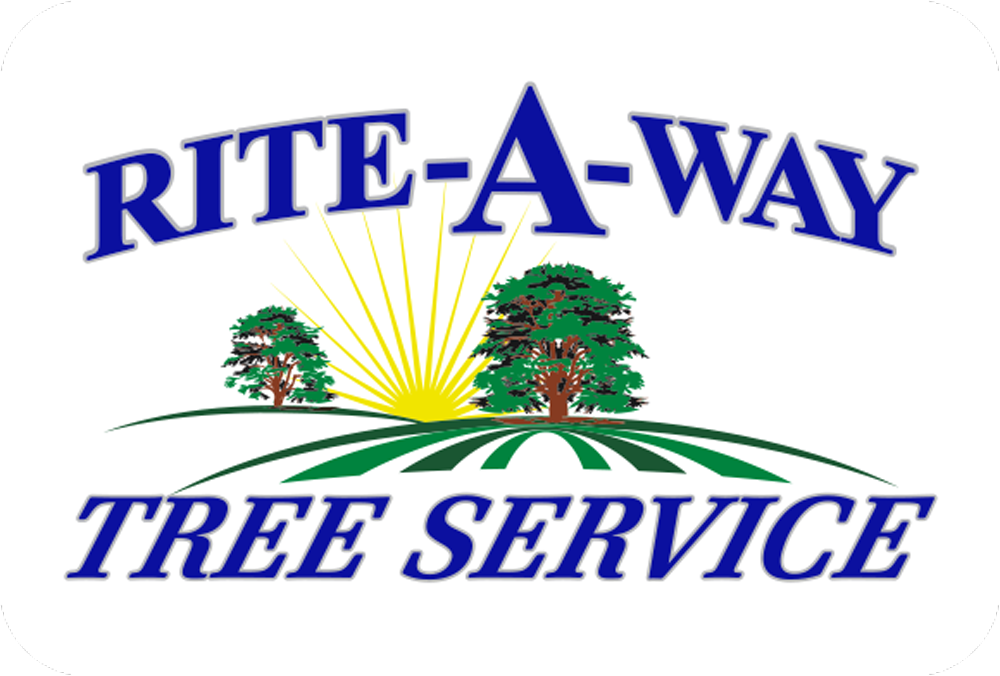What to Look Out For
The appearance, health, and growth of your trees can be adversely effected by various pests and diseases. Regular tree inspections, best practices, and appropriate use of chemicals can help prevent and/or treat these problems.
Some of the common tree pests and diseases include insect infestations, fungal infections, bacterial infections, and environmental stressors. Proper identification and management of these problems are crucial to maintain tree health and longevity.
Rite-A-Way Tree Service can diagnose tree pest and disease problems and help create the best plan forward to deal with them. Call Rite-A-Way at 314-427-7325 to schedule one of our expert arborists to look at your trees.
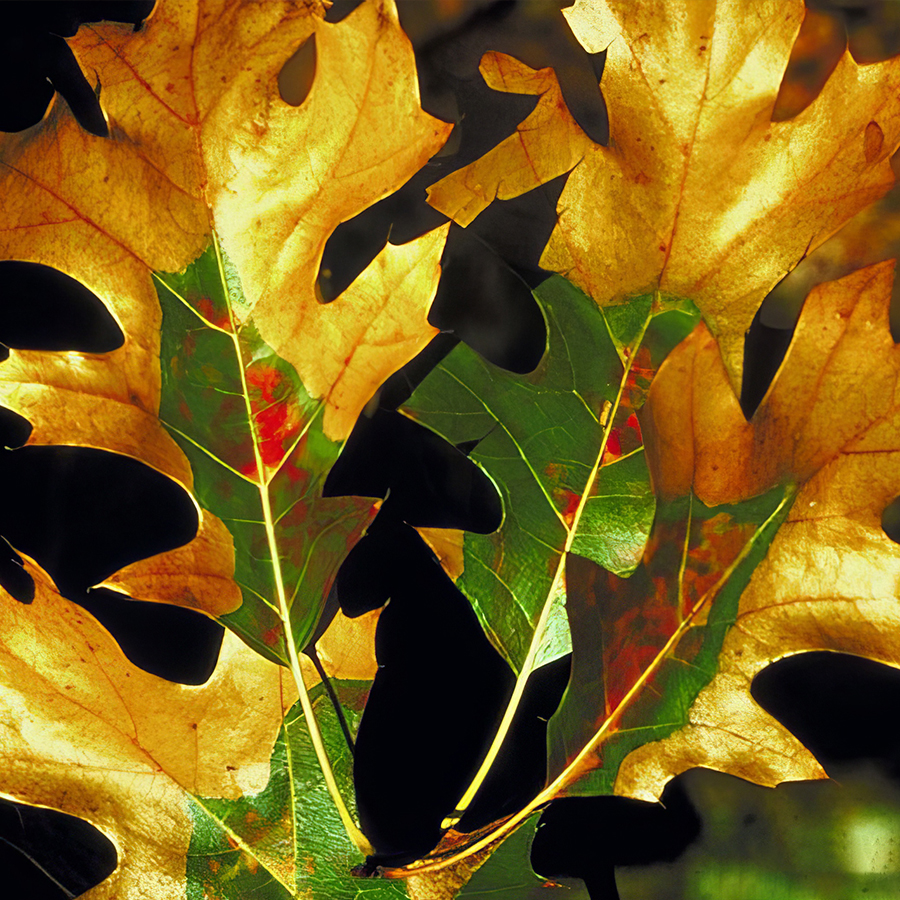
Oak Wilt Disease
Oak wilt is a lethal disease of oaks, especially species in the red oak group but it can also effect white oaks.
The fungus responsible, Bretziella fagacearum, invades the tree, causing it to die. In Missouri, the oak wilt fungus is spread primarily when sap-feeding beetles carry oak wilt spores to fresh wounds during the early part of the growing season. Once established in a tree, oak wilt can move though root grafts to nearby oaks.
WHAT TO LOOK FOR:
In Red Oaks:
Browning and wilting of leaves in the upper crown in early summer.
In White Oaks:
Browning and wilting of leaves in scattered branches and wilting leaves in the crown.
Wilted leaves look olive drab or light tan to bronze starting at the margins and progressing toward the leaf base. Brown or black streaking may be seen under the bark of wilted branches in both groups of oak.
In red oaks, rapid defoliation (leaf loss) can occur within two to six weeks of initial infection, and death occurs within a year. White oaks may take years to die from the infection.
When conditions are ideal for oak wilt, fungal mats form under the bark of dead red oaks in the spring following tree death. The fungal mats cause cracks in the bark and emit a sweet, fermenting odor that attracts sap-feeding insects that spread the fungus. Squirrels may chew through the bark to expose these areas.
WHAT TO DO
The best way to manage oak wilt is to prevent its spread by avoiding pruning or injuring oak trees during the growing season, and removing infected trees.
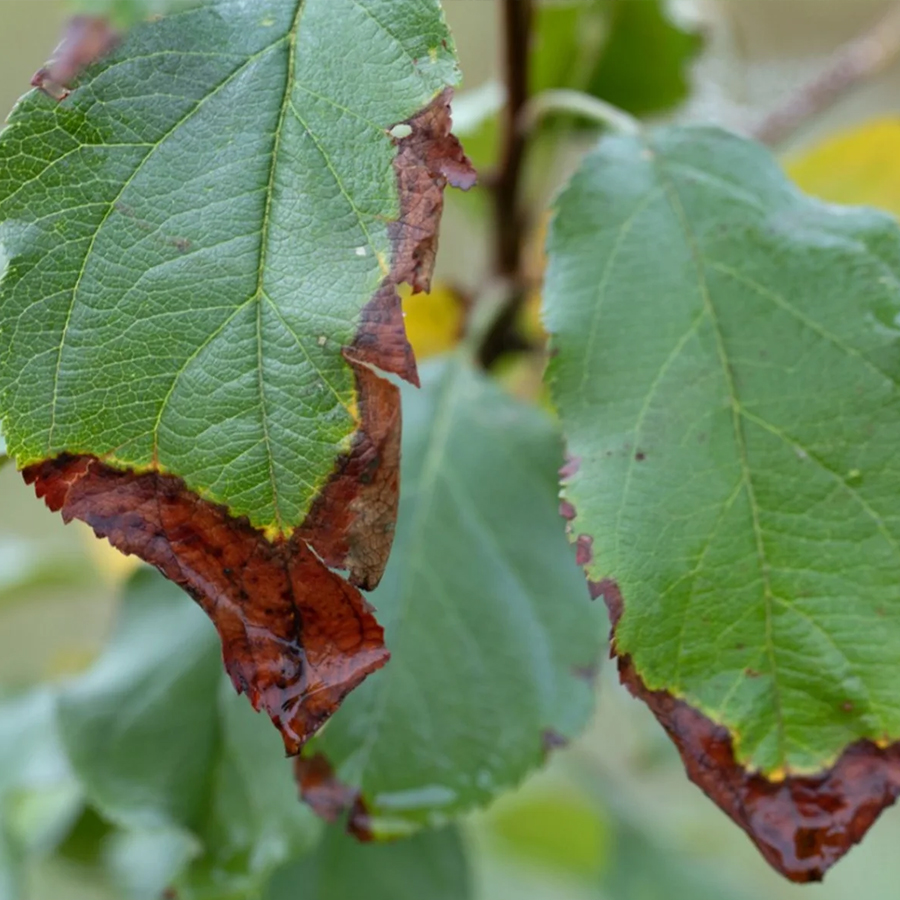
Fire Blight
Fire blight is a bacterial disease that affects a variety of ornamental trees especially in the rose family, including apples, pears, and crabapples.
The symptoms include wilting, blackening, sunken areas (cankers) and shriveling of leaves, flowers, and twigs.
The tissue from the canker to the end of the branch or twig turn black and looks like it has been burned and should be completely removed.
WHAT TO LOOK FOR:
- Twig cankers
- Wilting of new growth in the shape of a shepherd’s hook
- Tip dieback
HOW IT EFFECTS YOUR TREE
Once established, fire blight typically returns on an annual basis and will kill the current season’s growth where cankers exist. Severe cases may kill the whole tree.
WHAT TO DO
Fire blight spreads rapidly, and infected parts should be pruned and disposed of immediately. The use of systemic injections, topical sprays and proper pruning techniques can help prevent fire blight.
In serious cases pruning is required to remove the cankers, which eliminates the bacteria.
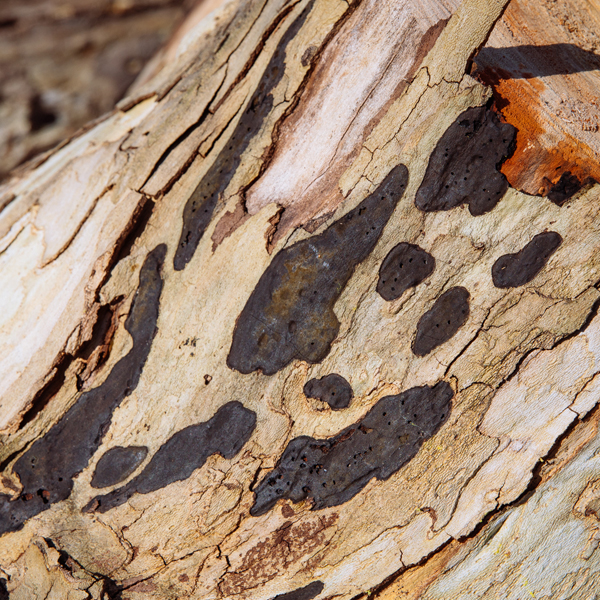
Anthracnose
Anthracnose is a fungal disease that affects a wide range of trees, including dogwoods, maple, sycamores, and oaks. It causes leaf spotting, discoloration, and defoliation. The fungus thrives in wet and humid conditions.
WHAT TO LOOK FOR:
- Spotted, blotched, or distorted leaves
- A scorched appearance from a distance
- Partial or complete defoliation (loss of leaves) in early spring
- Shoot blight, twig cankers, and dieback when infections are severe
WHAT TO DO
Proper tree spacing is the best way to prevent Anthracnose. Pruning, and maintenance practices that promote good air circulation and reduce leaf moisture are also good peventative measures.
Other good tree care practices that reduce stress like mulching, watering, avoiding wounds and improving air flow through the canopy with selective pruning also help.
Reduce future infections through raking and destroying fallen leaves.
Before symptoms appear, fungicides can be applied as a preventive measure. To be effective, it is necessary to fully cover the buds and twigs. Use fungicides containing the active ingredients propiconazole, thiophanate methyl, copper, mancozeb, or chlorothalonil. Carefully read and follow fungicide label instructions.
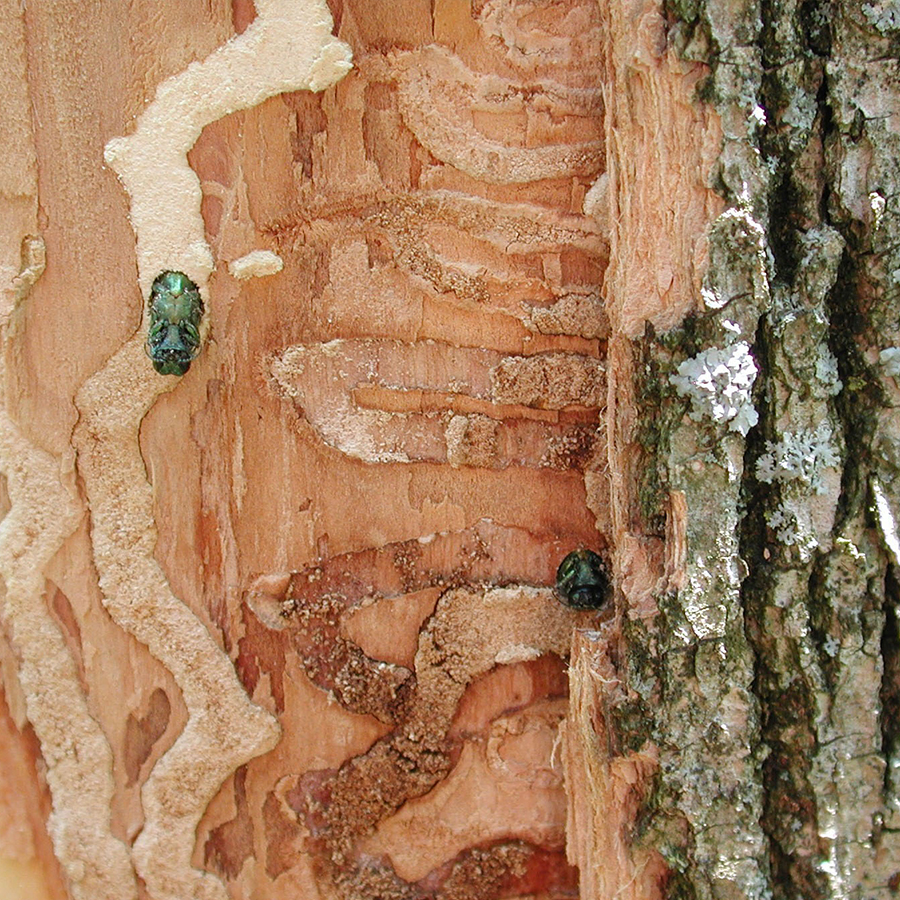
Emerald Ash Borer
Emerald ash borer is an invasive beetle that attacks feeds on and kills ash trees. The larvae feed on the inner bark, disrupting the tree’s ability to transport water and nutrients, leading to branch dieback and tree death.
WHAT TO LOOK FOR:
- Canopy thinning and dieback
- Epicormic (suckers) shoots on the stem
- D-shaped insect exit holes
- Larvae and tunneling under the bark
- Bark blonding (white and tan patches)
EFFECTS ON YOUR TREE
Emerald ash borer Infestation can increase quickly. This can cause serious structural weakness in your tree and may lead to a tremendous hazard for your home and landscape.
WHAT TO DO
The use of insecticides, tree injections, or removing infested trees are the common options for emerald ash borer.
A tree with a moderate to severe infestation should be promptly removed. A healthy tree can be treated every other year to prevent pest populations.
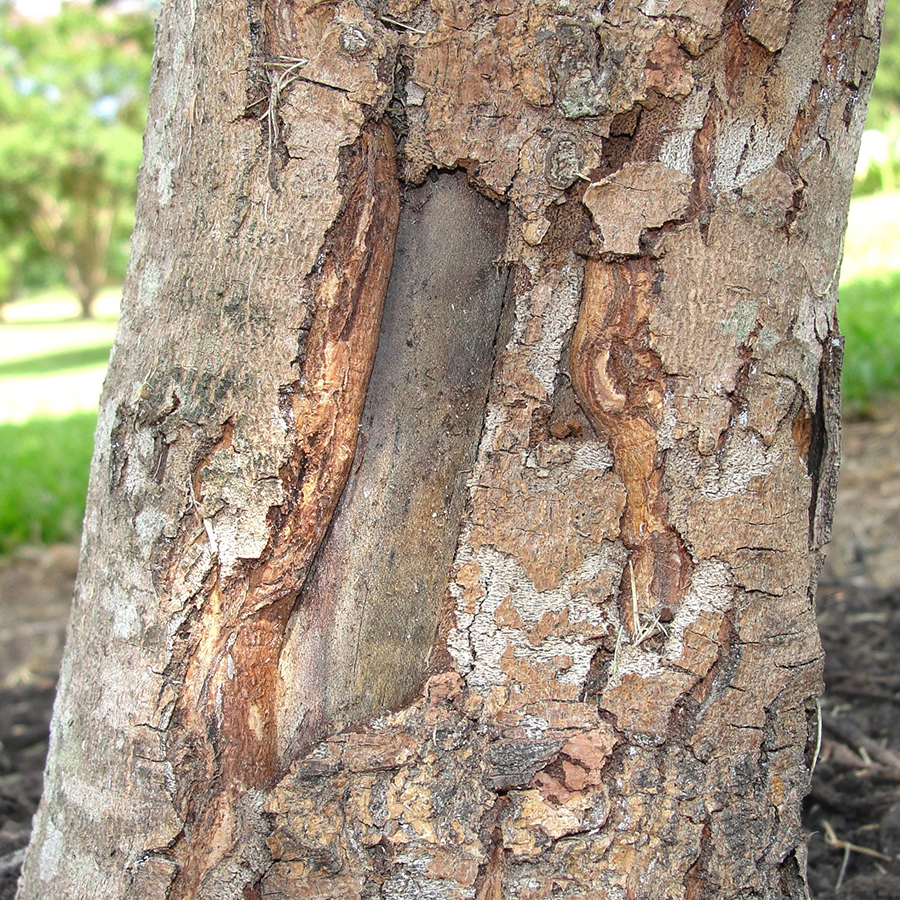
Sunscald
Sunscald is a condition that occurs when the bark on the tree’s trunk gets damaged by excessive exposure to sunlight. It often happens during winter when the sun is low and intense, and the temperatures are freezing. Sunscald can cause the bark to crack and split, making the tree more susceptible to infections and pests.
WHAT TO LOOK FOR
- Vertical bark splits
- Wounding on the SouthWest side of the trunk
- Discolored bark
- Tip dieback
HOW IT EFFECTS YOUR TREE
Young, small caliper trees with severe sunscald damage may need to be replaced. Trees with minimal damage may rebound once they receive the proper attention.
WHAT TO DO
Sunscald can be prevented by wrapping the trunks of thin barked trees with a light-colored tree wrap or paint it with a white latex paint.
Trees that have sustained damage should be maintained by good practices such as watering during drought, mulch, and pest management.
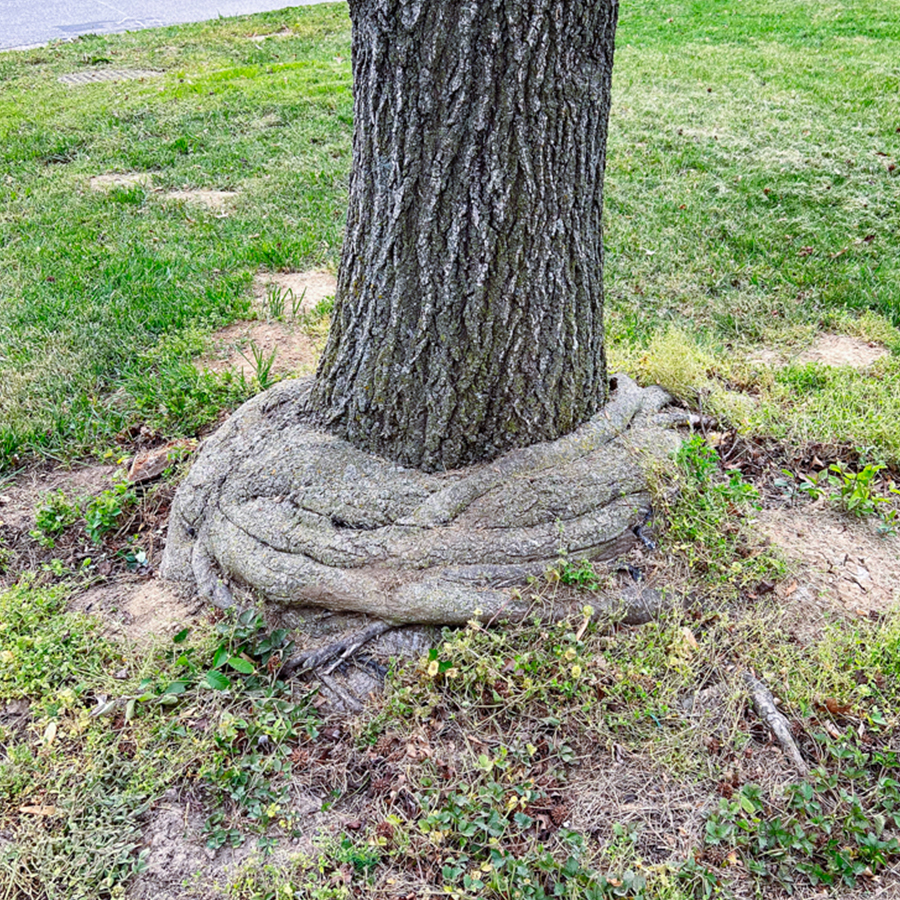
Stem Girdling Roots
Stem girdling roots are roots that grow around the tree trunk and are often not visible above ground. They compress and choke the tree, which interferes with the tree’s water and nutrient uptake.
WHAT TO LOOK FOR:
- Visible roots wrapped around the stem
- Lack of stem taper (root flare)
- Tip dieback
- Sparse canopy
HOW IT EFFECTS YOUR TREE
Stem girdling roots that wrap around the base of the tree will lead to serious issues and can lead to the tree falling over. They compress and choke the tree, which interferes with the tree’s water and nutrient uptake, leading to stunted growth, leaf yellowing, and premature death.
WHAT TO DO
Prevention and early detection can help mitigate the effects of stem girdling roots.
The best way to prevent stem girdling roots is to plant trees correctly, ensuring that the roots are adequately spread out and not encircling the trunk.
If girdling roots are identified, roots may be pruned to alleviate constriction. In severe cases, special tools may need to be used to remove soil from around the base of the tree to gain access to the roots without harming them.
